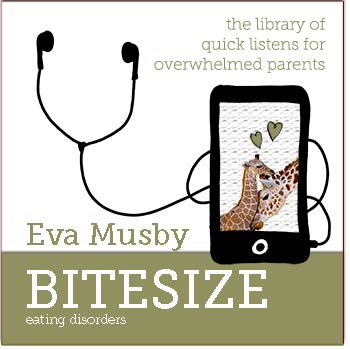Your cart is currently empty!

The book: table of contents
[If you prefer a description of what's in the book, click here]
1. How this book can help you (Entire chapter HERE)
An overview of the help I’d like to offer you in this book and some suggestions on how to find your way around the information fast.
2. How does an eating disorder affect you and your child? (Entire chapter HERE)
What’s going on in the mind of someone with an eating disorder? And what’s it like for you the parent? The aim of this chapter is to lead the way to understanding and compassion for yourself and for your child.
3. The parent's part in diagnosis (Entire chapter HERE)
Find out how eating disorders are diagnosed, the pitfalls you can guard against, and get tips on how to get expert care without delay.
4. Treatment: the essentials (Entire chapter HERE)
The essentials for a parent who wants immediate answers: what are the main principles of the treatments covered in this book, and how long before you can expect some relief?
5. What parents need to know about the causes of eating disorders (Entire chapter HERE)
There are many outdated theories about what causes eating disorders. Here’s what you need to know so that you can focus on what matters. If your mum thinks you gave your child an eating disorder, show her this.

6. Practical steps to help your child beat the eating disorder (HERE)
An eating disorder affects almost every aspect of our children’s lives. Here is an overview of what you can do to systematically weaken its grip and get your child back. We cover 'magic plate', meal plans, portion sizes, bingeing, purging, school, bedtime…. This chapter covers everything to get you started.
7. How do you get your child to eat? (The bungee-jumping analogy) (HERE)
In this chapter I give you all the tips I’ve learned from experience, from our therapists and from other parents. I’ll use a bungee-jumping analogy to illustrate the principles. Later, I’ll offer some examples using practical scenarios.
8. See the tools in action: mealtime scenarios (HERE)
In this chapter I’ll give you examples of things to say and not to say when you’re supporting your child at mealtimes. This will help you keep calm and will help your child to pick up that fork and eat. I then offer a scenario in which parents assist their child to eat for the first time. This chapter uses many of the practical and emotional tools described throughout the book.
9. Free your child of fears and rules with exposure ( HERE)
Our children can remain stuck in an eating disorder while they’re scared of certain foods or situations. In this chapter I describe how they can be desensitised to their fears through systematic exposure. Then I’ll give you a practical example of a desensitisation session.

10. The work towards to full recovery and independence (HERE)
What's the work once eating and weight gain are secure? Our children need guidance and practice to master 'normal' behaviours and autonomy. Often people rush this phase, so learn to place safeguards as you experiment. We look at school, exercise, holidays, recovering ‘normal’ eating, behaviours, beliefs and body image, preparation for college, relapse prevention, and total recovery.
11. Partners, family, friends and work: help or hindrance? (HERE)
How do you get your partner, your other children, your family, to function well as a team? What about the outside world, with its money and work concerns, and people who don’t understand this illness?
12. Which treatments work? (Entire chapter HERE)
What are the principles of successful therapies? What should you look for when choosing a therapist or treatment centre? And what are the red flags for poor treatment? I tell you more about family therapy, Family-Based Treatment (FBT), Maudsley, CBT and other approaches, suggest how to work in partnership with clinicians and look at when it might be better to find a new team. I also highlight what to look for in psychological support for yourself.

13. Powerful tools for well-being and compassionate connection (HERE)
A guide to compassionate communication, to help you support your child through the toughest challenges and help them thrive. And because you need to be effective and powerful, and because you are a role-model for your child, I also show you how self-compassion works. If you are fearful about what to say, if your child’s emotions – and your own – are all over the place, this chapter will help you be the confident, courageous and resilient parent your child needs.

14. Love, no matter what: how to support your child with compassionate communication (HERE)
Has your child become hard to recognise? Do you struggle to help them as they swing between depression and aggression? Are you finding it hard to offer unconditional love? Are you confused about using rewards and punishment? In this chapter you’ll find practical tools and examples to help you navigate common issues, communicate with compassion, and rebuild connection.
15. How to build up your own resilience and wellbeing (HERE)
How to cope and even flourish: your wellbeing, your resilience, your strengths. Lots of tools and wisdoms so you can model wellness, be a lighthouse for your family, and thrive.

Thank you (HERE)

More
For a more detailed table of content: see here. It includes page numbers for the paperback.
Notice also the search box to search this entire site.
* Parents' reviews of the book *
* Professionals' reviews of the book *
* Prefer to listen? Then get my Bitesize audio collection — searchable, short audio clips, each addressing one common question. *
Last updated on:




LEAVE A COMMENT (parents, use a nickname)